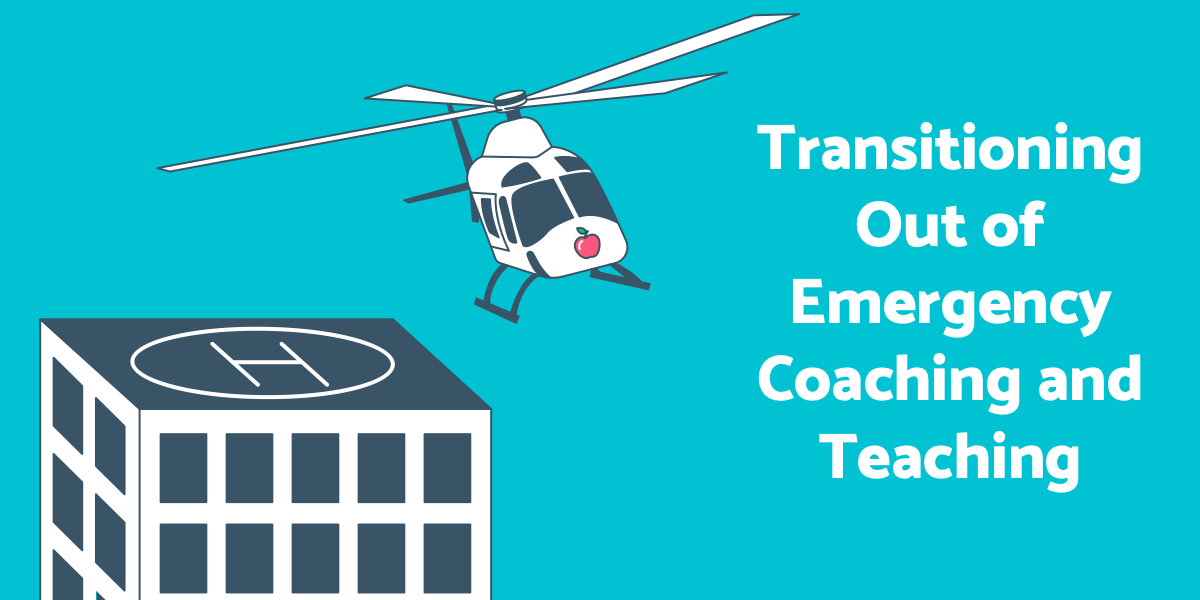
Featured Resource
Why Over Half of California School Districts Trust SchoolStatus
Read More >Join Mission: Attendance to reduce chronic absenteeism in 2025-26! >> Learn How <<






As we venture back to in-person teaching and learning, we must decide what tactics worked in the past and what we should leave there. Ellen Eisenberg, executive director of The Professional Institute for Instructional Coaching, highlights what she believes we should strengthen, keep, and dismiss for the return to school and the role of the IC during the process.
A
s our schools migrate from emergency coaching and teaching to the intentional mode of instructional delivery, the school family must rethink what a normal routine looks like. In many ways, the pandemic made the entire school community reassess what was really important in teaching and learning—that’s what we call “the silver lining” effect!
We have learned to be more purposeful and deliberate in what and how our students learn. So, what do teachers need to know about the return to school and how will their instructional coaches help them become re-integrated and re-acclimated into their school setting?
What strategies work effectively in schools? Are there different techniques for brick and mortar than for virtual school? Let’s unpack some “definites” and some non-negotiables for either environment.
First of all, teachers need to re-establish their relationships with and among their students. Those connections are critical for a sense of belonging; students need to feel that they are part of a group and teachers are the glue that keeps them socially and emotionally attached. Teachers need to be reminded that fostering collegiality between and among students makes a difference in student outcomes. In a virtual world, our teachers had to use breakout rooms so that their students could work collaboratively; we should maintain that breakout room concept in a face-to-face environment.
Instructional coaches need to create ongoing, continual collaborative work sessions that strengthen the relationships between teachers and provide opportunities for them to learn from each other. This kind of collective problem-solving brings multiple perspectives to the decision-making scenario.
As teachers transition back into school, they must recognize that this instructional coaching custom moves practice forward and builds teacher capacity. Instructional coaches could bring teachers together in a “virtual water cooler” and in breakout rooms; in-person, coaches should regularly allot time for the same cooperative and collaborative work in groups that is imperative for growth.
Many teachers are worried about the achievement gaps. Yes, there will be some gaps but how about starting the year with celebrating and strengthening what students did learn throughout the pandemic? Think about it: our students have learned how to navigate technology in ways they might not have had without the challenges brought by the pandemic. They also learned how to manage their time on tasks. Let’s assume that students were given opportunities to “learn on their own.”
Many students became architects of their own learning and used their time well to explore new and exciting areas of interest. They had time to think, network with other “like-minded” students, and came out on the better side of learning—let’s keep this going!
An important component of what we learned this past year is that not everything we did in our bricks and mortar classrooms was needed, nor were the ways in which we delivered instruction always effective.
Do we really need to teach every chapter in a book from the beginning to the end? Do we really think micromanaging every student’s time on task creates meaningful learning? Do we want to go back to being “the sage on the stage” instead of promoting accountable talk?
Let us take our lessons learned into the new year. Don’t go backward; go forward by not forgetting what we’ve learned and practiced since February 2020. Help our students incorporate what they’ve learned by reflecting on what we’ve learned.
Remember that they may need a little more TLC as they become acclimated to the noise level once again; their concentration might be questioned as they either wait for others to catch up or need extra time themselves, and their focus may be distracted with social activity around them. Either way, remember what Elsa said, “Let it go; let it go!”
Ellen B. Eisenberg is the executive director of The Professional Institute for Instructional Coaching (TPIIC), and the former executive director of The Pennsylvania Institute for Instructional Coaching (PIIC) from 2009-2018. Established in 2018, TPIIC is a researched-based resource for developing and supporting the delivery of consistent, high-quality professional development and professional learning around instructional coaching and mentoring designed to help teachers implement effective instructional practices.
Be sure to connect with the TPIIC on Twitter @PIICcoach!
{{cta(‘352a410e-db79-4f33-a482-d301e8041965′,’justifycenter’)}}
 SchoolStatusSchoolStatus gives educators the clarity and tools they need to get students to class and keep them moving ahead. Through our integrated suite of data-driven products, we help districts spot attendance patterns early, reach families in ways that work for them, and support teacher growth with meaningful feedback. Our solutions include automated attendance interventions, multi-channel family communications in 130+ languages, educator development and coaching, streamlined digital workflows, and engaging school websites. Serving over 22 million students across thousands of districts in all 50 states, SchoolStatus helps teachers and staff see what matters, act with speed, and stay focused on students.
SchoolStatusSchoolStatus gives educators the clarity and tools they need to get students to class and keep them moving ahead. Through our integrated suite of data-driven products, we help districts spot attendance patterns early, reach families in ways that work for them, and support teacher growth with meaningful feedback. Our solutions include automated attendance interventions, multi-channel family communications in 130+ languages, educator development and coaching, streamlined digital workflows, and engaging school websites. Serving over 22 million students across thousands of districts in all 50 states, SchoolStatus helps teachers and staff see what matters, act with speed, and stay focused on students.
News, articles, and tips for meeting your district’s goals—delivered to your inbox.






